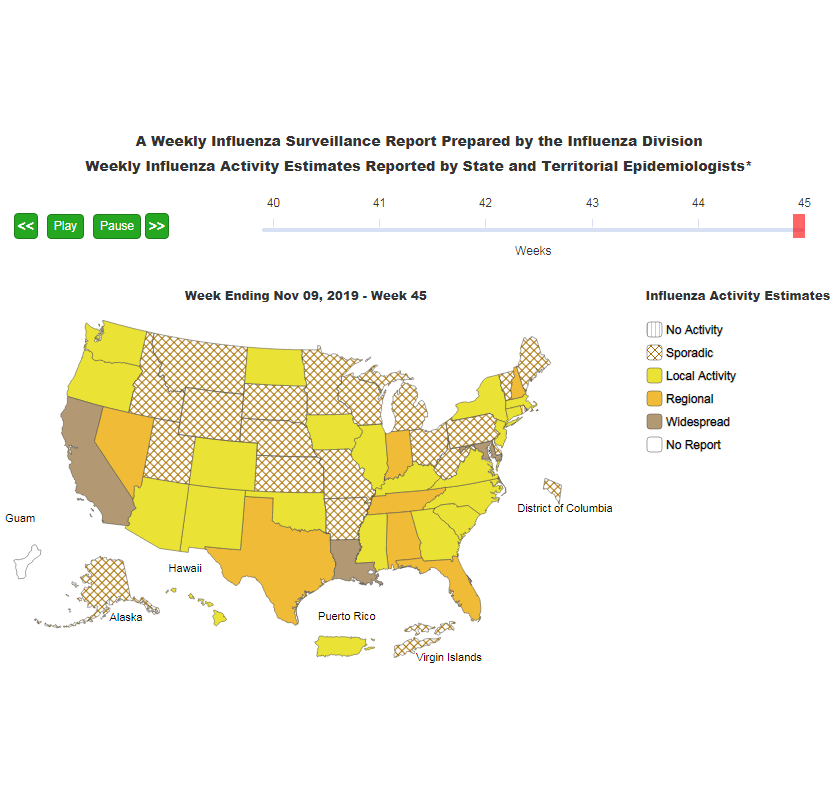It’s that time of year again, flu season. In fact, the CDC’s “Flu View” shows cases are beginning to increase quickly in certain states.
Super Spreaders
More people are spreading the influenza virus to others as the number of cases rises in the US. Research has proven some people spread contagious infections to a multitude of people versus others who only spread the disease to a small few.
The potency of a Super Spreader is the difference between a local outbreak and a national epidemic. Monitoring body temperature in relation to the onset of illness is the first step to prevent the spread of your infection to other people.
Let’s Talk About Fever
Fever is the leading indicator of infection and the best predictor of contagiousness. A fevered person is sick and has 10 to 1,000,000 times more contagion coming from them in breath than someone well.
For casual contact and airborne illness, a person is not considered to be sick one day before and one day after symptoms of the flu are apparent.
What About the Weather?
We all know when the weather gets cold, the flu season starts. But why? Is it just because we spend more time inside?
Because the holidays bring us from planes full of sneezing people to big, crowded parties and the germs circulate? Because that’s just the way, it is?
Actually, the weather has a lot to do with the spread of the flu. The flu virus, and many other viruses like the common cold, thrive in dry conditions which cold temperatures bring.
Small wonder, then, that cold and flu season peaks as the weather is at its coldest and driest in December-February.
What About the Flu Shot?
For most people, knowing when flu season happens (and the best time to get a flu shot) is enough to keep themselves protected (don’t forget general virus protection steps too).
- Get a flu shot,
- Wash your hands frequently,
- And make some hot cocoa and sit by the fire as the weather gets colder!
Who Is at Risk?
If you’re in charge of managing the health of vulnerable people, those steps are just the beginning. If you manage a hospital with an intensive care unit or a care center for children or older adults, you know the stakes are high.
Infections that healthy people in the general population can fight off can be devastating to:
- Children
- The elderly
- The highly susceptible
They’re the primary victims of the thousands of flu deaths that occur each year. So, preventing infections where these vulnerable populations are gathered in significant numbers is literally lifesaving.
How Can I Prevent Spreading the Flu?
You likely already know and follow the steps generally recommended to prevent the spread of infections:
- Good hand hygiene
- Sanitization protocols
But how do you know when the risk is highest for the spread of infections? After all, if you knew, you could take extra steps to prepare when they mattered most. But that would require something that can predict the future, right?
welloWatch™
There’s an app that can do that. welloWatch™ is a free app (download from the App Store or Android) that keeps you updated on local weather conditions conducive to viral spread and susceptibility.
Then you can take any extra precautions needed to keep your patients or clients, your staff, and your visitors safe and healthy.
Knowledge is Prevention
Knowledge is not just power – it’s also prevention. Your patients and clients in your hospital or care facility rely on you and your staff to keep them safe, even amid outbreaks.
Your reputation rests on doing so. That’s why you need every tool in your infection prevention protocol – be sure to add welloWatch to it.
We Can Help
Want to learn more? See how the self-service hands-free body temperature monitoring solution, welloStationX, can help deter the flu from spreading.
welloStationX is a self-service hands-free system that measures body temperature in just 3 seconds, enabling healthcare, education, jail, and any high-volume location or business to help prevent infection spread by detecting individuals with elevated temperatures immediately.


